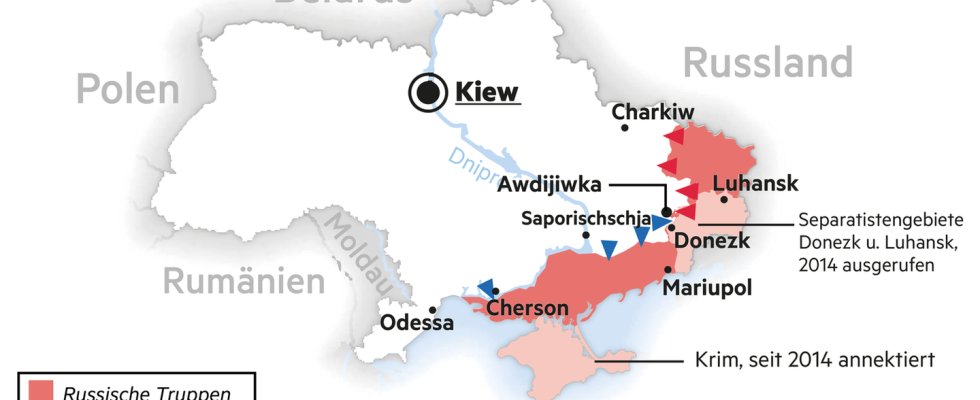Second anniversary
Current maps, graphics and tables on the war in Ukraine
After a rather fruitless Ukrainian offensive in the summer, Russian troops are making advances in the east from December
© DPA Infographic / star
This weekend marks the second anniversary of the Russian invasion of Ukraine. These four graphics show the different effects of the war on Ukraine and Europe.
Russia’s devastating war of aggression against Ukraine has been going on for two full years since this Saturday. The following series of images provides as up-to-date and factual an overview of the current status as possible and shows how the fronts have shifted over the course of time.
Russian attack
How the fronts in Ukraine have shifted since the beginning of the war
The maps show which areas are controlled by Russian forces and separatists and which areas have been defended by Ukraine.
1.15 million Ukrainians in Germany
After the start of the Russian war of aggression, the year 2022 was marked by a large refugee movement from Ukraine to Germany. 960,000 people immigrated to Germany and found refuge, among other things, with committed host families.
In 2023, net immigration will be significantly below the previous year’s figure, as the Federal Statistical Office announced on Thursday. In the last twelve months, 277,000 arrivals from Ukraine and 156,000 departures to Ukraine were recorded. This leaves a net immigration of 121,000 Ukrainians.
The high level of immigration from Ukraine has caused the population with Ukrainian citizenship in Germany to grow from 138,000 people in January 2022 to 1.15 million people in October 2023. The share of Ukrainians in the total population rose from 0.2 percent to 1.4 percent in the same period.
143.63 billion in promised aid
In order for Ukraine to have a chance against the overwhelming Russian forces, it needs equipment and financial support. The following graphic provides an overview of which ten countries have provided the most support so far:
The aid promised per country includes financial, humanitarian and military support.
Natural gas deliveries to Germany
For decades, Russia delivered cheap gas to Germany, either directly via the Nord Stream pipeline or indirectly via lines through other European countries.
Since the attack on the Nord Stream pipelines in September 2022, Germany has become more dependent on deliveries from other countries such as Belgium, Norway and the Netherlands.
In addition, the first German terminals for the delivery of liquefied natural gas (LNG) were put into operation on the North and Baltic Seas.

